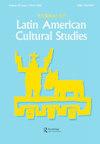Interpreting the Remnants of Women’s Reproductive Crises: Physicians and the Shifting Legal Terrain of Infanticide in Nineteenth-Century Cuba
IF 0.3
4区 社会学
Q4 CULTURAL STUDIES
引用次数: 0
Abstract
In the mid-nineteenth century, Cuban authorities produced an unprecedented volume of documentation concerning the conspicuous appearance of fetal remains, infant cadavers, and abandoned infants in public places across the island. Although the physical presence of these bodies and tissue was not new to the mid-nineteenth century, the evolution of the law and a rapidly shifting urban landscape made the material evidence of women’s responses to unwanted pregnancy more legible and more meaningful to Cuba’s colonial state. Yet, for police and judges, the domains of pregnancy and childbirth remained far beyond their training and expertise. They relied on an emerging professional class of physicians to produce and interpret evidence confirming criminality. However, the ongoing professionalisation of Cuban medicine, and in particular the emergence of a medical elite of foreign-educated obstetricians, created frictions within the medical community, and between physicians and judges. Each group of men articulated different – often competing – interpretations of the evidence, which served their broader professional goals and vision of Cuba’s future. Emerging out of these confrontations over the meaning of the material remains of reproductive crises were key contradictions in the prevailing understandings of the law, ones that hinged on race, class, and gender in perceptions of criminality.解释妇女生殖危机的残余:医生和19世纪古巴杀婴法律领域的变化
在19世纪中期,古巴当局制作了前所未有的大量文件,内容涉及在全岛公共场所随处可见的胎儿遗骸、婴儿尸体和弃婴。虽然这些身体和组织的实际存在在19世纪中期并不新鲜,但法律的演变和迅速变化的城市景观使得妇女对意外怀孕的反应的物证更加清晰,对古巴的殖民国家来说也更有意义。然而,对于警察和法官来说,怀孕和分娩领域仍然远远超出了他们的训练和专门知识。他们依靠新兴的专业医生阶层来提供和解释证实犯罪的证据。然而,古巴医学的不断专业化,特别是在外国接受教育的产科医生组成的医疗精英的出现,在医学界内部以及医生和法官之间造成了摩擦。每一组人都对证据做出了不同的——往往是相互矛盾的——解释,这有利于他们更广泛的职业目标和对古巴未来的展望。在这些关于生殖危机的物质残余意义的对抗中,出现了对法律的主流理解中的关键矛盾,这些矛盾取决于种族,阶级和性别对犯罪的看法。
本文章由计算机程序翻译,如有差异,请以英文原文为准。
求助全文
约1分钟内获得全文
求助全文

 求助内容:
求助内容: 应助结果提醒方式:
应助结果提醒方式:


